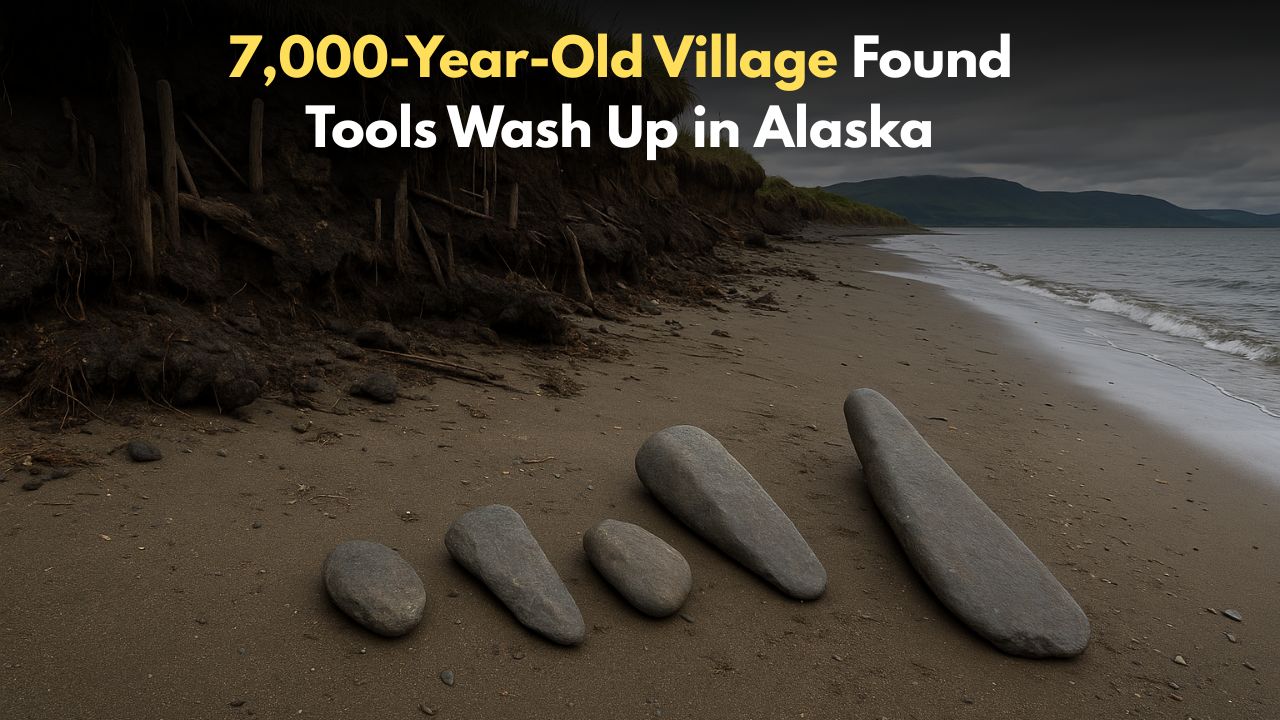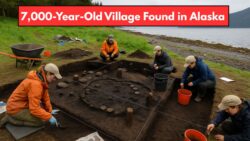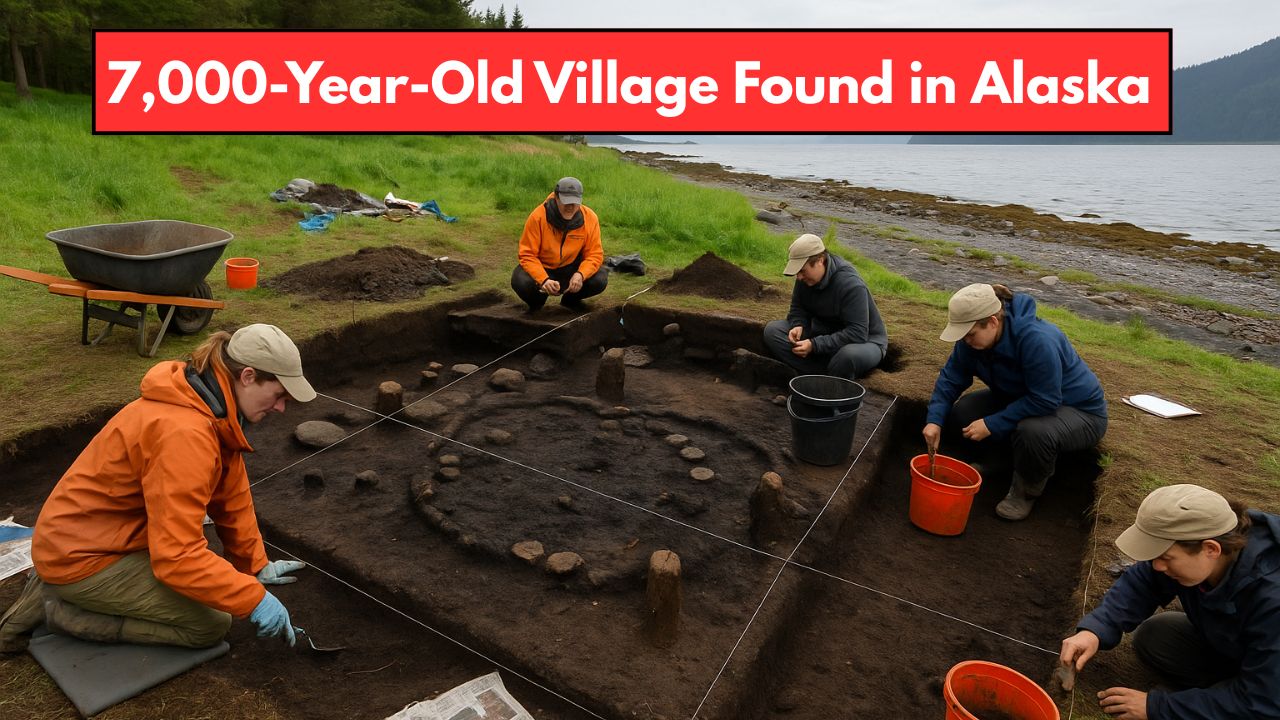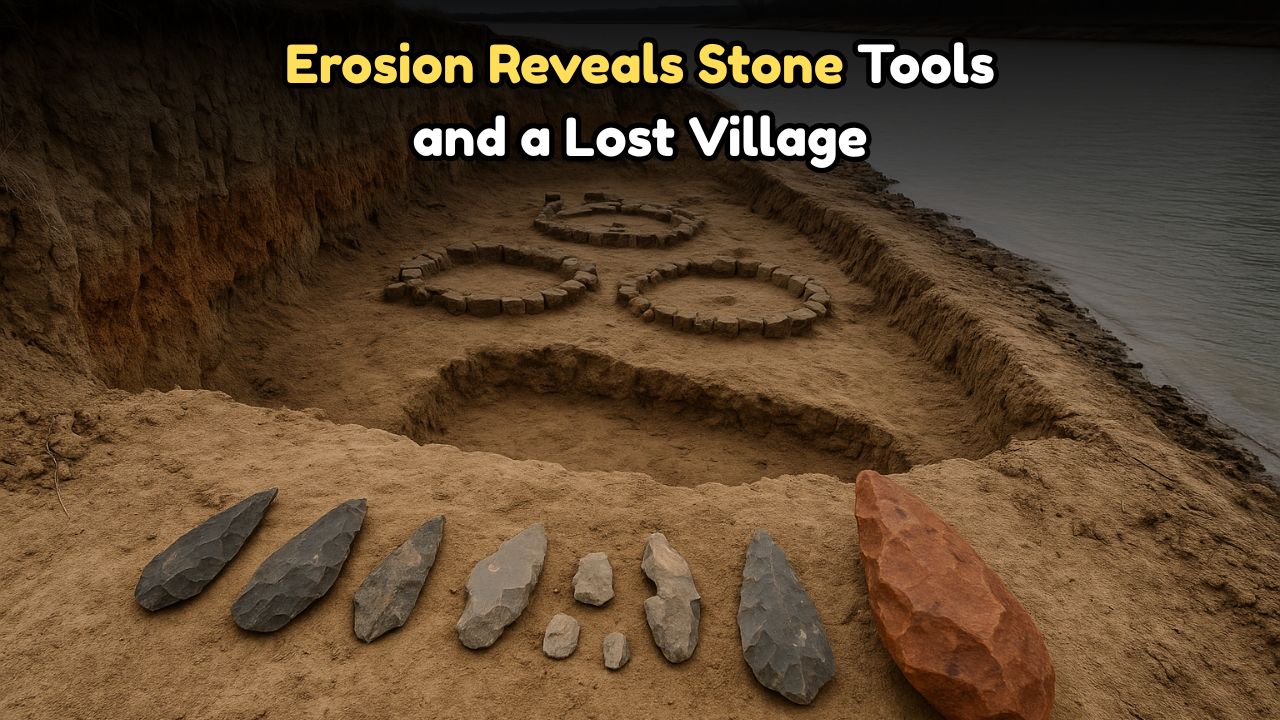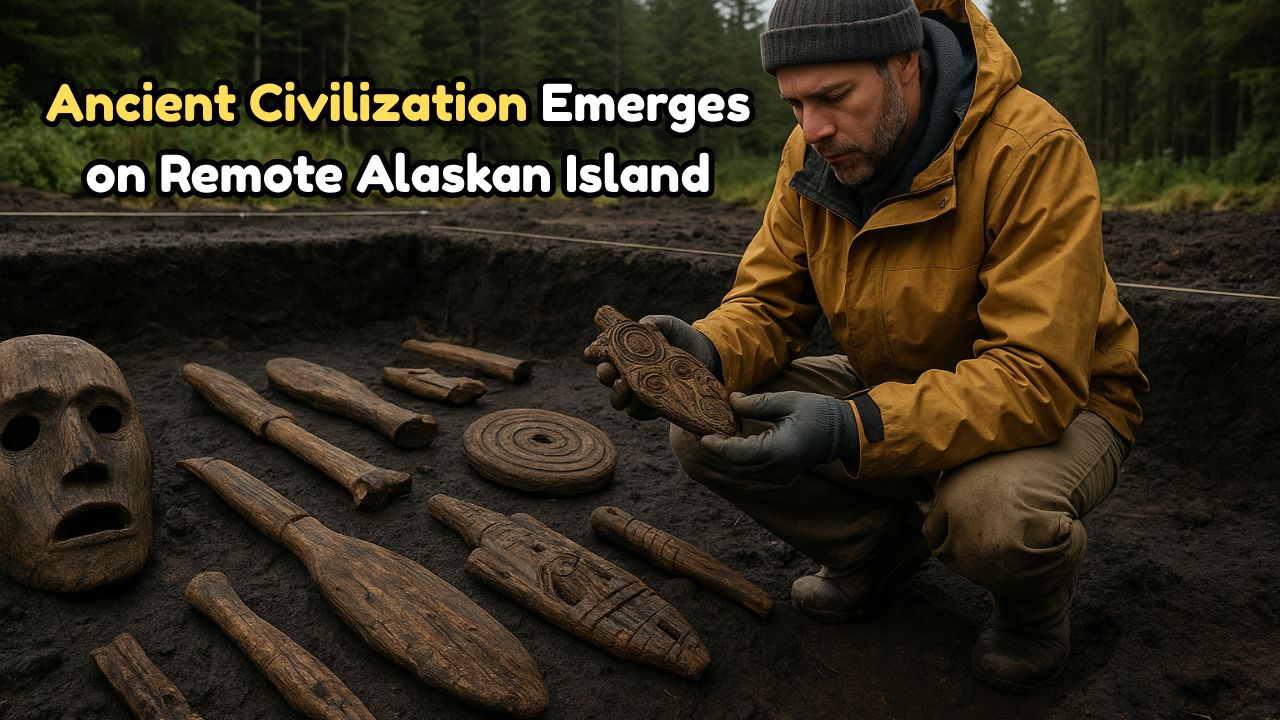7000-Year-Old Alutiiq Village – In a stunning archaeological revelation, a 7,000-year-old Alutiiq village has emerged from the eroded shores of Shuyak Island in Alaska, rewriting our understanding of North America’s ancient indigenous history. The once-hidden prehistoric site has shocked experts with its exceptional preservation and the variety of tools, artifacts, and village remains it contains. For centuries, this ancient village lay buried beneath layers of soil and vegetation. But with changing coastlines, rising sea levels, and intensified storm erosion, the secrets of this ancient community are now coming to light. Researchers from the Alutiiq Museum and University of Alaska Fairbanks have confirmed that the unearthed materials reflect an advanced and organized coastal community that may have relied heavily on fishing, whaling, and tool-making. Most astonishingly, stone tools—some possibly older than the pyramids of Egypt—were found casually scattered along the beach, carried ashore by waves and storms.
Ancient Village Unearthed: What We Know So Far
Recent coastal erosion, coupled with shifting environmental patterns, exposed several previously undocumented village structures and tools. Experts believe this settlement was once a thriving hub of trade and cultural activity.
- Location: Shuyak Island, northern coast of Kodiak Archipelago, Alaska
- Estimated Age: Over 7,000 years old
- Discovered By: Local volunteers and archaeologists in mid-2025
- Preserved Items: Hunting tools, fishhooks, stone blades, and dwelling foundations
- Village Size: Possibly housed 50–100 residents
- Cultural Attribution: Early Alutiiq (Sugpiaq) civilization
- Cause of Exposure: Coastal erosion, rising sea levels, and recent storm surges
What Were the Alutiiq People Like?
The Alutiiq, also known as Sugpiaq, are Native peoples of coastal Alaska who have lived in the region for thousands of years. Their ancestors were resourceful, communal, and deeply connected to the sea.
Key Traits of Ancient Alutiiq Civilization:
- Lived in semi-subterranean homes insulated with whale bones and sod
- Relied on hunting marine mammals (seals, whales) and fishing
- Crafted tools using obsidian, slate, and bone
- Wove baskets and clothing using sinew, grass, and animal hide
- Traded with neighboring tribes through canoes and sea routes
- Practiced animism, with deep respect for sea animals and natural spirits
The Stone Tools That Changed Everything
The tools found at the site are among the most significant elements of the discovery. Some of these stone tools were so well-preserved that their edges remain sharp even after 7,000 years.
Highlights of the Tools Found:
| Tool Type | Material | Usage | Significance |
|---|---|---|---|
| Ulu Knives | Slate | Skinning fish and animals | Still used in some native homes |
| Fishing Hooks | Bone | Catching salmon and halibut | Show advanced maritime culture |
| Spearheads | Obsidian | Hunting marine animals | Indicate long-distance trade |
| Hammerstones | Basalt | Tool production and food preparation | Sign of settlement-based society |
| Net Weights | Stone | Keeping fishing nets submerged | Evidence of organized fishing |
| Engraved Blades | Slate | Possibly ceremonial or symbolic | Insight into spiritual practices |
| Polished Scrapers | Flint | Preparing hides and materials | Reflects craftsmanship |
How Erosion Became an Unexpected Archaeologist
Environmental degradation and storm erosion, typically considered threats to heritage, have ironically exposed invaluable history on Alaska’s remote coastline.
Erosion Timeline and Impact:
| Year | Natural Event | Archaeological Impact |
|---|---|---|
| 2020 | Storm surge and high tides | Beach layers begin eroding near Shuyak |
| 2022 | Winter storms | Bones and stone tools appear intermittently |
| 2024 | Sea level rise accelerates | Full dwelling outlines exposed |
| 2025 | Artifact clusters found | Village layout becomes traceable |
Global Significance of the Alutiiq Site
The discovery is not just a regional matter—it has global relevance for anthropology, archaeology, and Native studies.
- Oldest Coastal Village in North America with clear evidence of maritime life
- May alter migration theories about early humans in the Americas
- Enhances the visibility of Native Alaskan history beyond oral tradition
- Could be added to the UNESCO tentative heritage list
- Serves as a case study for climate-induced discoveries
Preservation Plans and Indigenous Involvement
Archaeologists are working alongside the Alutiiq community to ensure respectful, culturally sensitive excavation.
- Community Role: Alutiiq elders are helping identify tools and share oral legends
- Site Protection: Temporary protective barriers installed to slow erosion
- Funding: Grants from the National Park Service and Indigenous History Trust
- Museum Curation: Many items to be preserved at the Alutiiq Museum in Kodiak
What This Means for Alaska and Future Generations
This discovery offers a tangible bridge between ancient Native knowledge and modern science. Schools in Alaska plan to include the find in history curricula, and efforts are underway to create virtual museum tours.
- Revives interest in indigenous archaeology
- Empowers local youth with ancestral pride
- Attracts eco-tourists and scholars to Kodiak Archipelago
- May spark similar surveys across coastal Alaska
FAQs About the 7,000-Year-Old Alutiiq Discovery
Q1. Where exactly was the ancient village found?
A1. On Shuyak Island, part of Alaska’s Kodiak Archipelago.
Q2. How old are the artifacts discovered?
A2. Archaeologists estimate the site is over 7,000 years old.
Q3. What types of tools were found at the site?
A3. Ulu knives, bone fishhooks, obsidian spearheads, and stone scrapers.
Q4. Why did the site become visible now?
A4. Coastal erosion and climate-driven storm surges exposed the buried site.
Q5. Can the public view these artifacts?
A5. Yes, many items will be displayed at the Alutiiq Museum in Kodiak.
